17 Beautiful Plants That Thrive Beneath Pine Trees
Many people wonder if it is possible to plant under pine trees and still have a thriving garden. The soil is often dry and shaded, which can make planting a challenge. Thankfully, there are plants that naturally do well in this setting. These plants can bring texture, blooms, and greenery to a space that often looks bare. By adding them, you can turn a difficult area into a highlight of your yard.
This post may contain affiliate links, which helps keep this content free. Please read our disclosure for more info.
Lily of the Valley
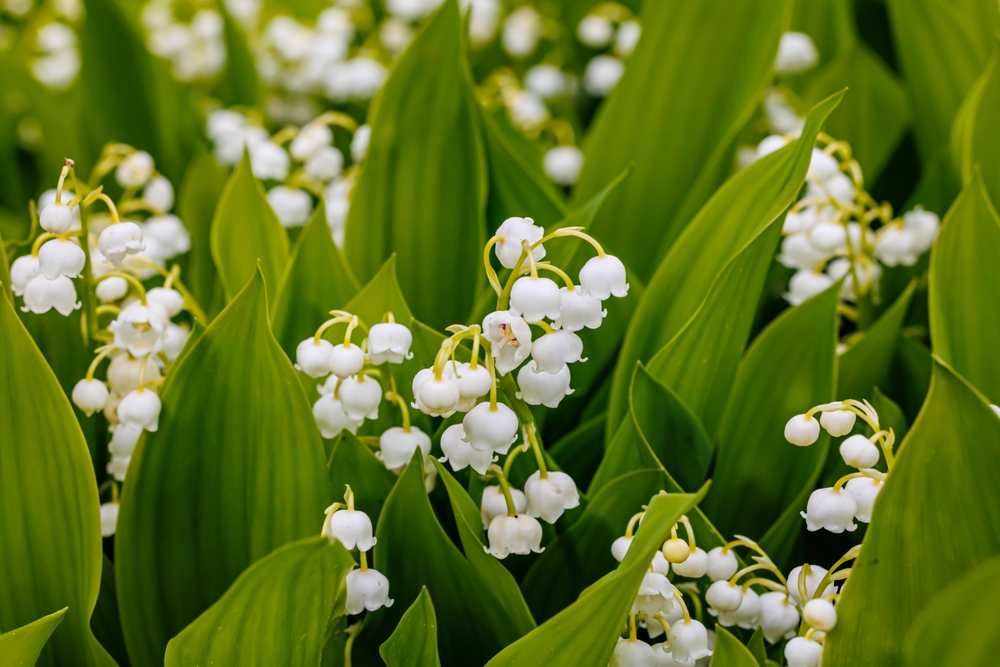
Lily of the Valley is a small perennial that does well in shaded areas, making it a good choice under pine trees. Its bell-shaped white flowers add a soft touch in spring. The plant prefers moist but well-drained soil and can spread steadily over time. It also produces a sweet fragrance that adds charm to the garden. The deep shade from pines does not prevent this hardy flower from blooming each year.
This plant is low-maintenance once established, which makes it a practical option for difficult spots. It is also resistant to deer, which can help protect your garden. In cooler climates, it thrives especially well. Be mindful that it can spread widely, so it may require some control. With proper placement, it can brighten an otherwise bare space under your trees.
Hosta
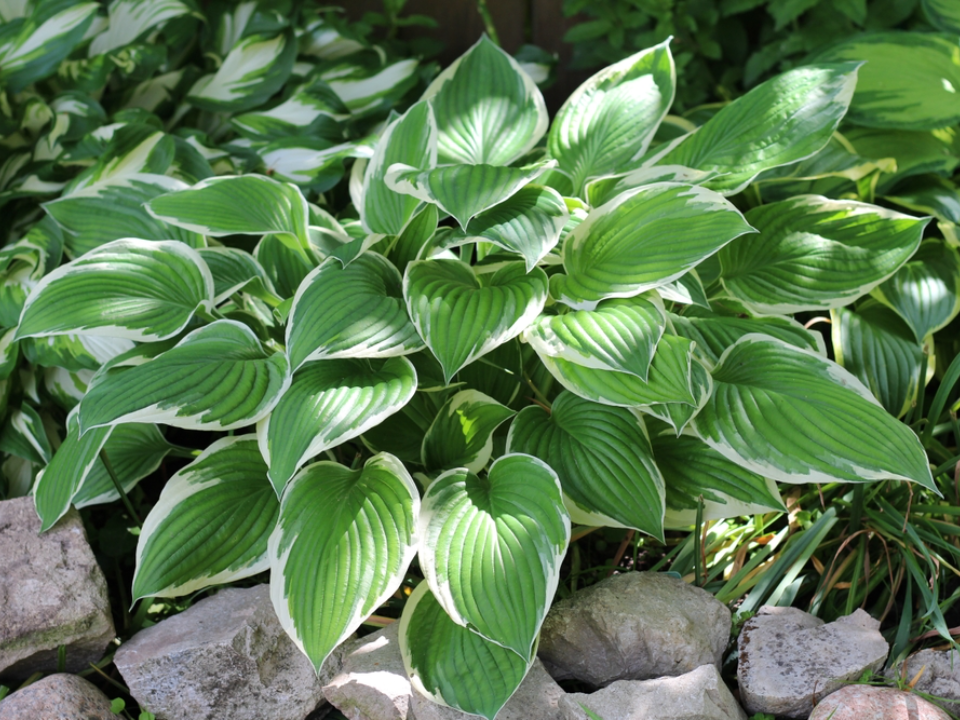
Hostas are shade-loving plants that grow well beneath pine trees. Their wide leaves come in green, blue, or variegated shades, offering a mix of textures. They enjoy rich, moist soil but can tolerate pine needles on the ground. Hostas grow in clumps, making them easy to arrange under trees. Their tall stalks of flowers attract pollinators during summer.
Because of their leafy growth, they are useful for covering large empty areas under pines. Hostas come in many sizes, from small tabletop varieties to large ones that spread widely. They are easy to divide, so one plant can be split into several over time. In colder climates, they die back in winter and return each spring. Their resilience makes them a favorite among gardeners.
Azalea
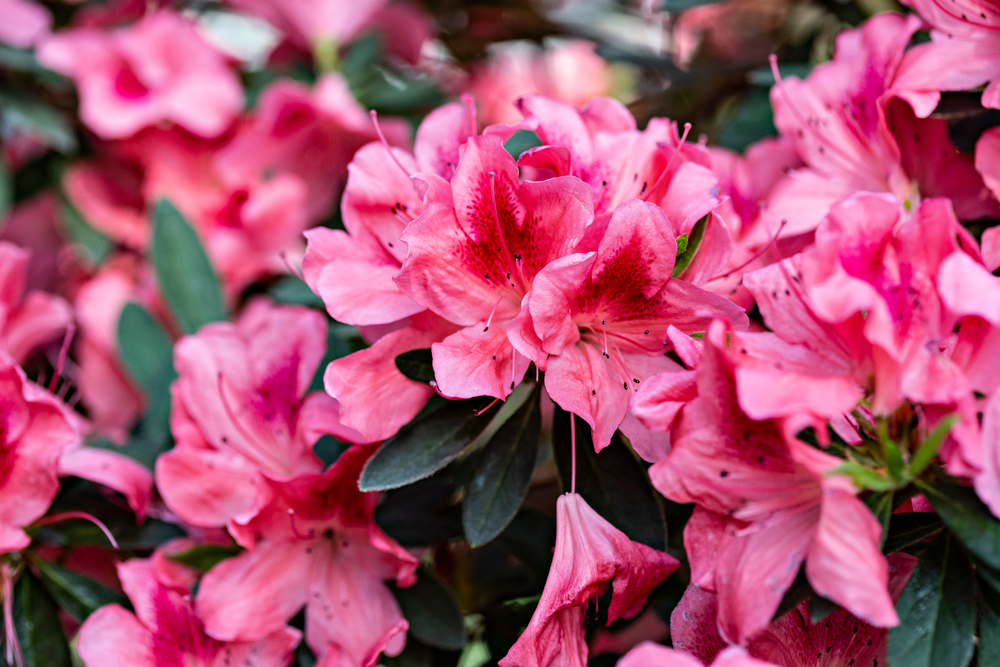
Azaleas are shrubs that thrive in acidic soil, which matches the natural conditions beneath pine trees. They produce vivid blooms in pink, red, purple, or white during spring. Their shallow roots adapt well to the soil found under pine needles. With proper watering, they remain healthy even in partial shade. These shrubs bring bold seasonal color to shaded areas.
Azaleas are often used in landscaping for their long-lasting flowers. They can be planted in groups for a striking effect or as single focal points. Many varieties are evergreen, adding greenery year-round. Regular pruning after flowering keeps them in shape. Their beauty and adaptability make them a popular pick under pine trees.
Rhododendron
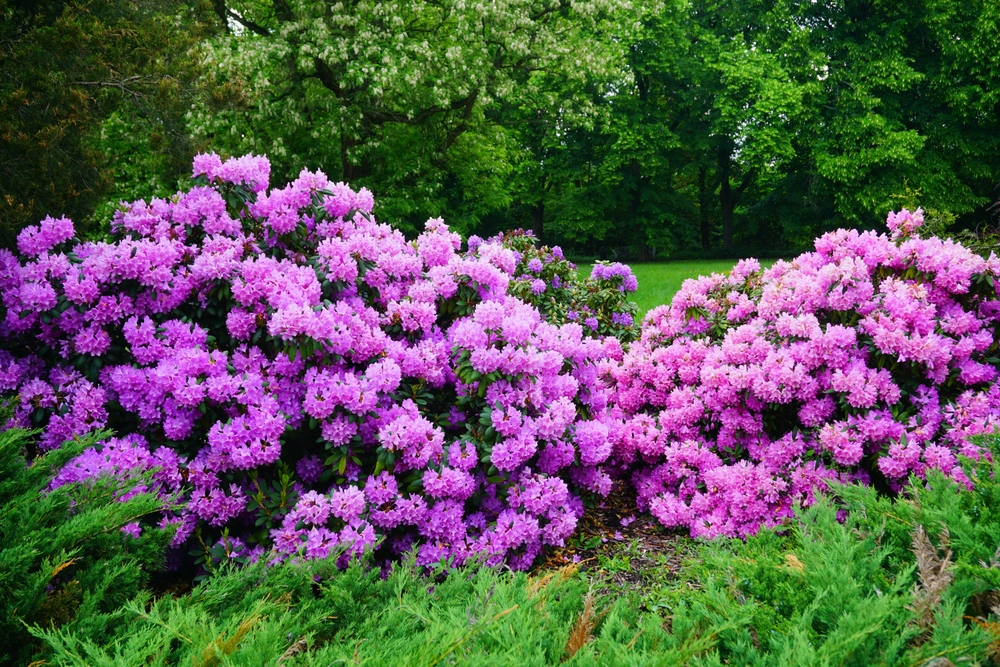
Rhododendrons are closely related to azaleas but are larger and more dramatic in bloom. They prefer acidic soil and thrive in shaded woodland settings. Their flowers appear in large clusters, creating a strong impact in late spring. These shrubs need consistent moisture but should not sit in soggy ground. Mulching with pine needles helps maintain the right conditions.
Rhododendrons can grow quite large, so they are best for spacious areas under pines. They provide structure and height, making the shaded ground look less empty. Many species are evergreen, adding year-round interest. Their leaves are glossy and thick, which keeps the plant attractive even without blooms. Their combination of foliage and flowers makes them excellent companions to pine trees.
Ferns
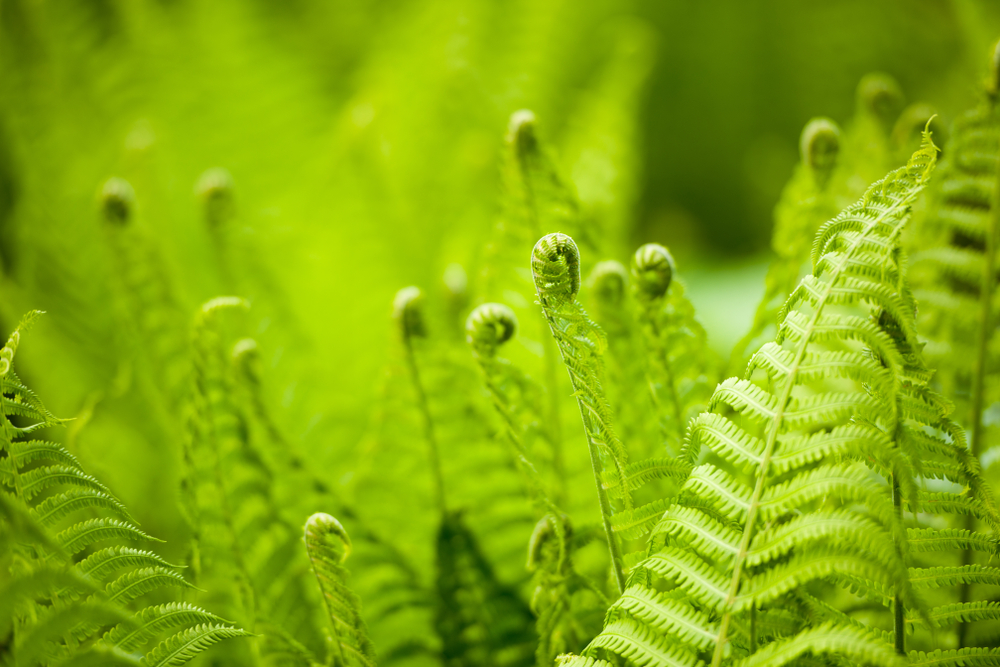
Ferns are classic shade plants that adapt well to the soil under pine trees. They thrive in low light and enjoy the dampness provided by shaded ground. Their feathery fronds bring a delicate texture to the garden. Many ferns are hardy and can survive in a variety of climates. Once established, they require little care to keep growing.
Because they grow in clusters, ferns can fill in empty spaces under trees. They mix well with flowering plants, adding balance and contrast. Pine needles make a natural mulch that suits them well. Some species, such as the Christmas fern, stay green all year. Ferns bring a woodland look that feels natural under pine trees.
Bleeding Heart
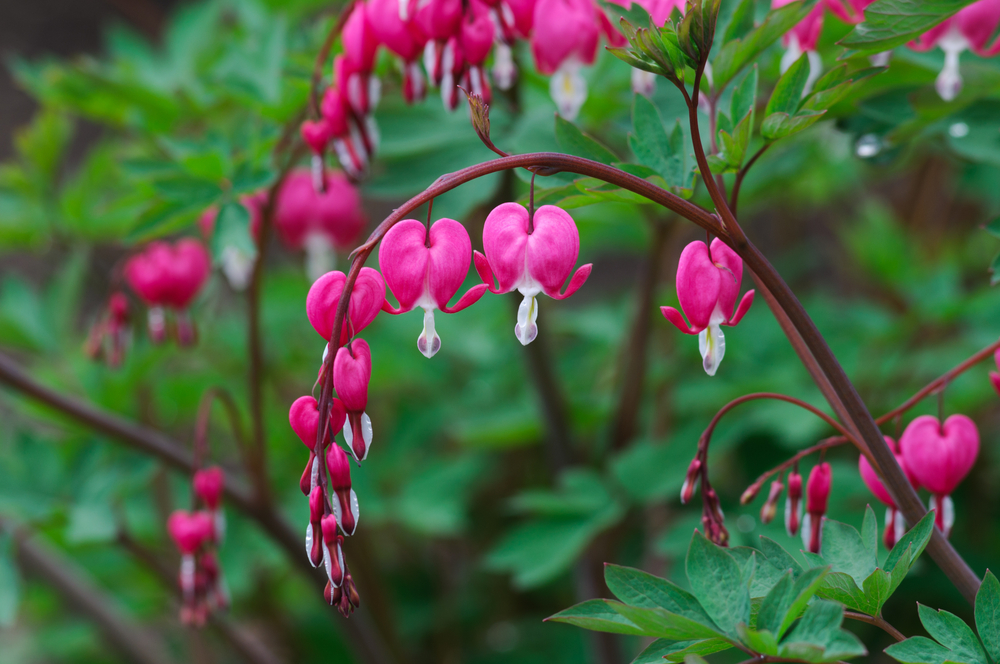
Bleeding Heart is a perennial that thrives in shaded gardens, including areas under pine trees. Its arching stems produce heart-shaped flowers in pink or white. These blooms appear in spring and early summer, adding charm to shady spots. The plant prefers moist, well-drained soil that stays cool. It naturally fits into woodland-style plantings.
This plant dies back in midsummer but returns the next year. Its unique flowers make it a standout in shaded gardens. It grows well alongside ferns or hostas, creating a layered look. Bleeding Heart is also deer resistant, which helps in many areas. Its seasonal beauty makes it a lovely addition under pines.
Wild Ginger
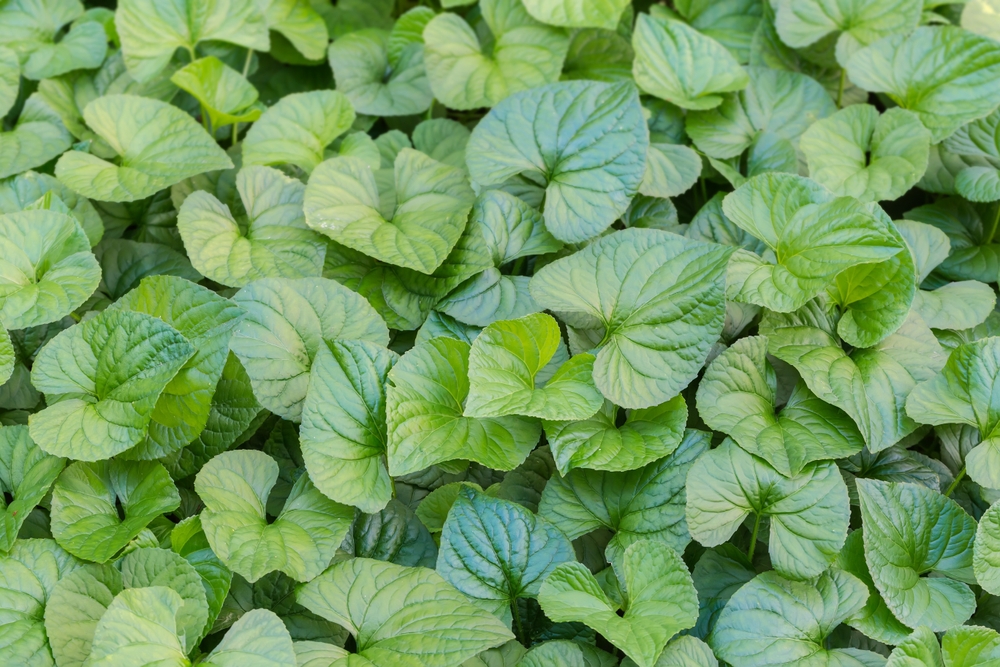
Wild Ginger is a ground cover that adapts well to shaded and acidic soil. It produces small, hidden flowers close to the ground in spring. The heart-shaped leaves create a dense carpet under trees. It thrives in moist conditions and spreads slowly over time. The plant is native to woodland areas, which makes it a natural choice under pines.
Wild Ginger works well as a living mulch, keeping weeds from taking over. Its leaves stay green through most of the season. It combines well with taller shade plants for variety. The roots give off a spicy scent when crushed, which adds interest. Wild Ginger is a practical and attractive ground cover under pine trees.
Columbine
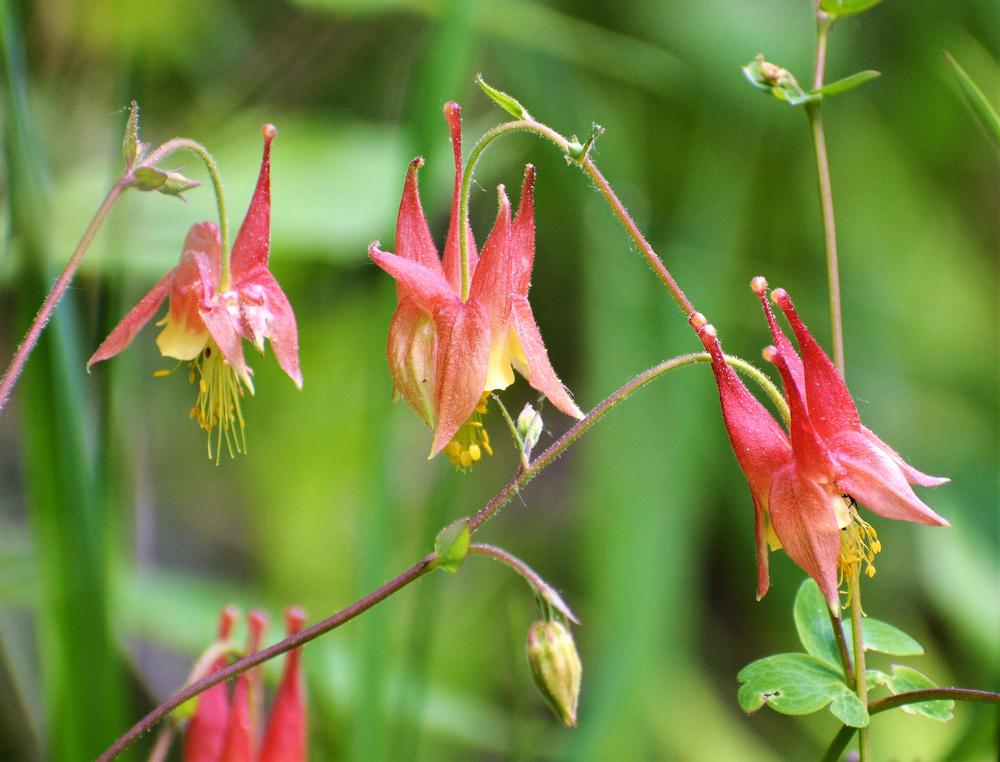
Columbine is a delicate perennial that adapts to shaded areas near pine trees. Its flowers come in a variety of colors and have a unique spurred shape. These blooms appear in spring and attract hummingbirds. Columbine prefers well-drained soil but can handle partial shade easily. Its airy foliage adds lightness to shaded spots.
This plant is short-lived but reseeds freely, so it comes back year after year. Different varieties provide a mix of colors for the garden. It pairs well with ferns and other shade perennials. Columbine is drought tolerant once settled, which helps near tree roots. Its graceful blooms add movement and beauty to pine-covered areas.
Hydrangea
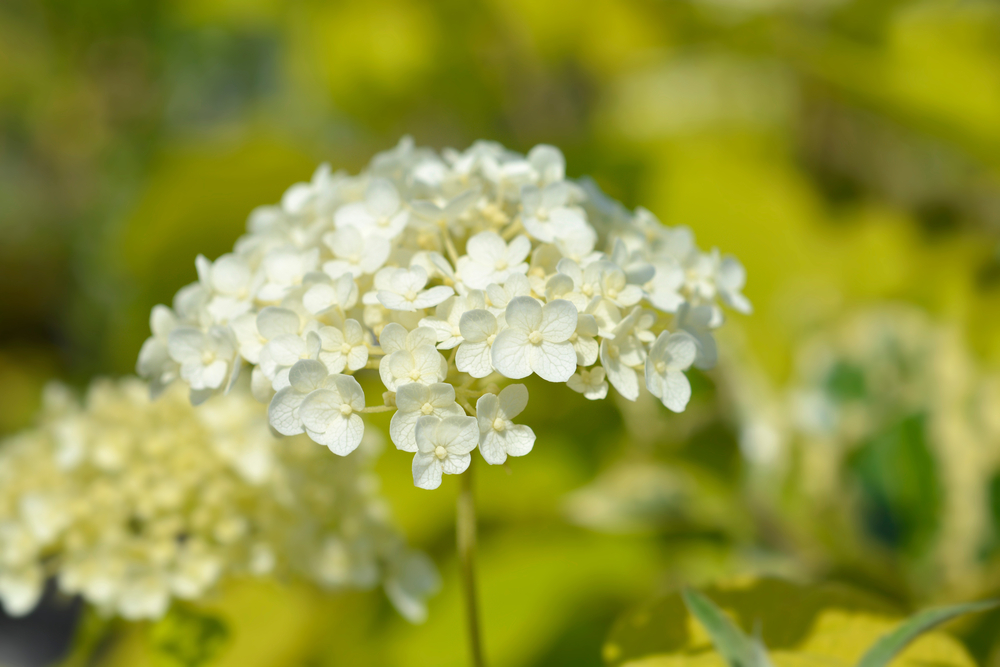
Hydrangeas grow well under pines if they receive partial sunlight during the day. They prefer acidic soil, which helps produce their blue flower shades. Their large, rounded blooms appear in summer and can last into fall. With regular watering, they remain full and healthy even in shade. The flowers also make excellent cut arrangements.
Hydrangeas add both color and size to shaded gardens. Their leaves stay lush throughout the season, filling out bare spaces. Pruning after flowering helps maintain their shape. Some types, like oakleaf hydrangea, also provide fall color with their leaves. Their versatility makes them a strong choice for planting beneath pines.
Heuchera (Coral Bells)
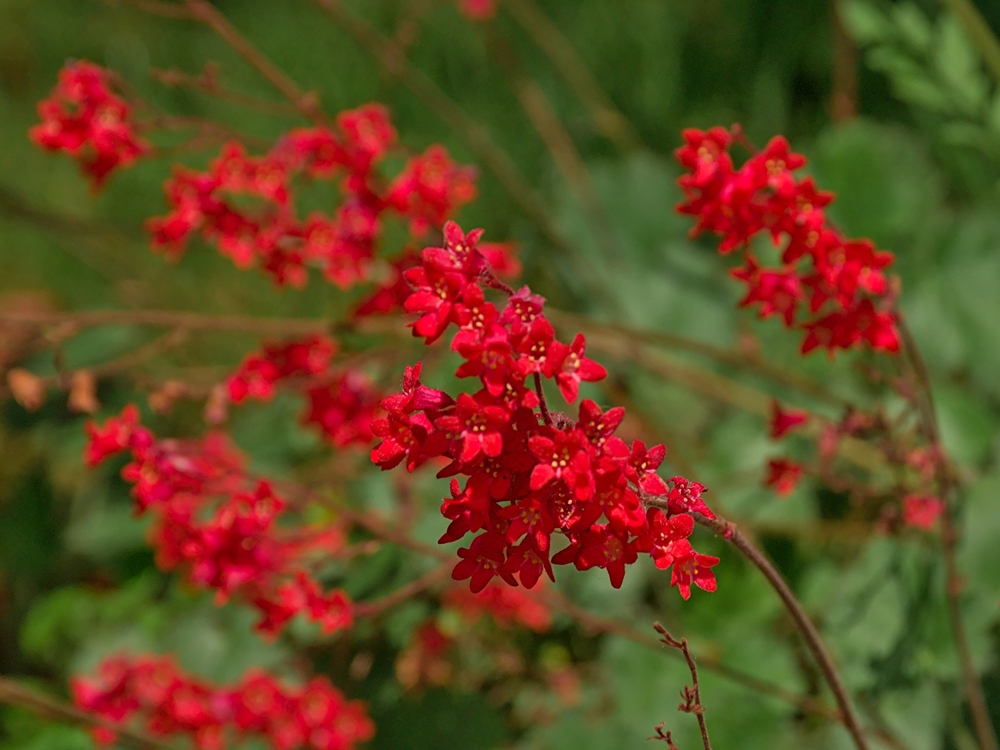
Heuchera, also known as Coral Bells, thrives in shaded or partially shaded spots under pine trees. Its foliage comes in a range of colors from green to deep purple. Small flower spikes rise above the leaves in summer. It prefers well-drained soil with steady moisture. The colorful leaves stand out in shaded areas.
This plant remains attractive throughout the growing season. It works well as a border plant or ground cover. Heuchera is also easy to mix with ferns or hostas for layered designs. Many varieties are evergreen in mild climates. Its striking leaves make it a valuable choice under pines.
Solomon’s Seal
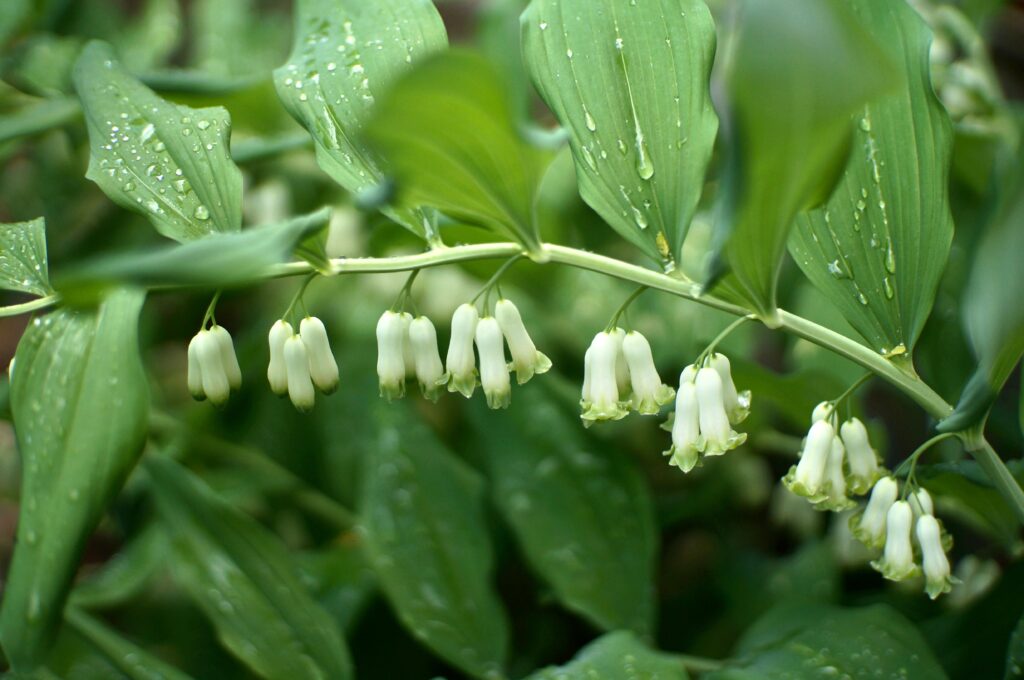
Solomon’s Seal is a perennial with arching stems and small, hanging white flowers. It thrives in shady woodland settings, including under pine trees. The plant prefers moist, rich soil and spreads slowly through rhizomes. Its graceful shape adds movement to shaded areas. After flowering, it produces small blue-black berries.
This plant grows well in naturalized garden spaces. It mixes well with ferns and hostas, adding contrast. In fall, its leaves turn golden yellow, extending its appeal. It is deer resistant, which makes it practical in rural areas. Solomon’s Seal offers beauty through multiple seasons.
Trillium
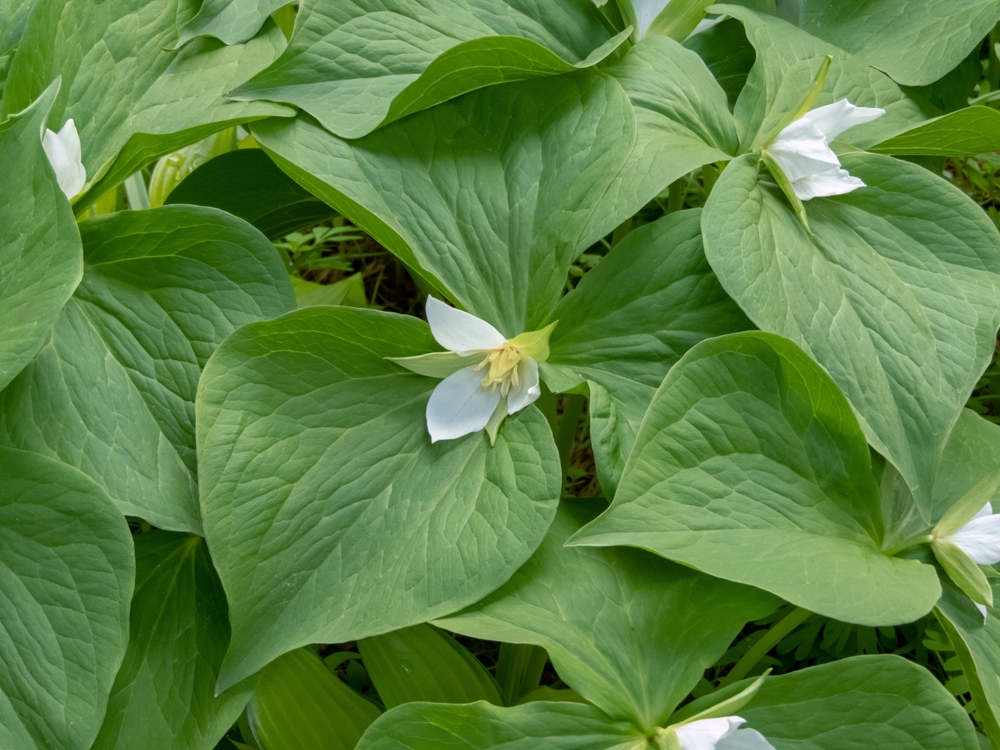
Trillium is a native woodland plant that grows naturally in shaded, acidic soil. It produces three-petaled flowers in spring, often white, red, or pink. The blooms rise above broad, three-leaf stems. Trillium prefers soil rich in organic matter and steady moisture. It is slow-growing but long-lived once established.
This plant is often considered a woodland treasure. It pairs beautifully with ferns and other spring bloomers. Because it is slow to spread, it is best left undisturbed. Many species are protected, so it is important to source them responsibly. Trillium adds elegance and a natural touch under pine trees.
Astilbe
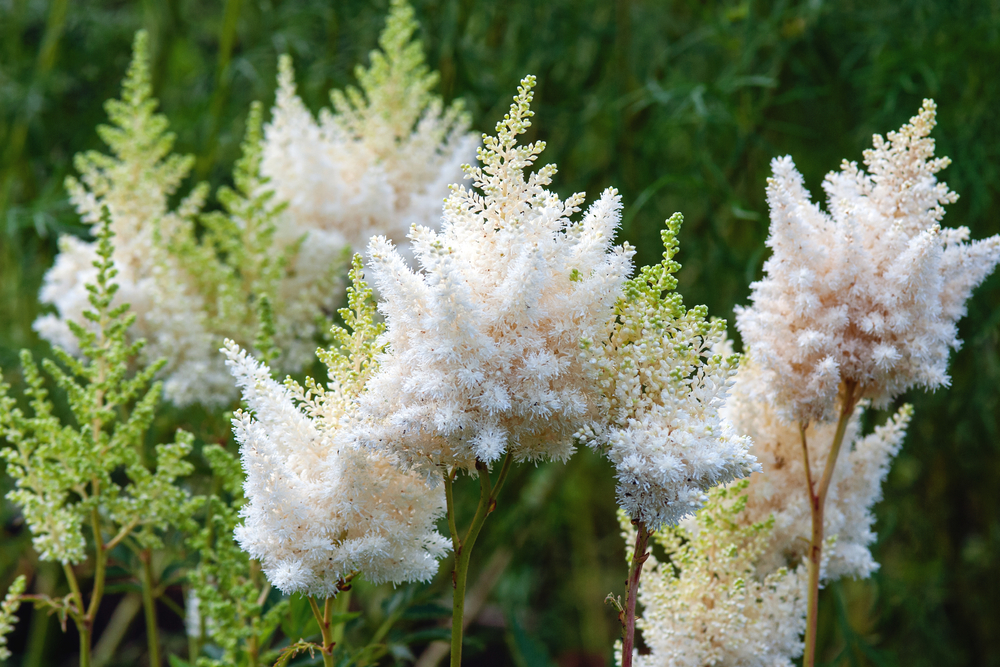
Astilbe is known for its feathery flower plumes that brighten shaded areas. It thrives in moist soil, making it suitable for planting under pine trees with good watering. The flowers appear in shades of pink, red, white, or lavender. Astilbe adds height and texture to shaded plantings. Its foliage remains attractive after blooms fade.
This plant is ideal for borders or grouped plantings. It combines well with hostas and ferns for layered designs. Astilbe requires little care once established, aside from regular watering. Deadheading helps encourage more flowers during the season. Its colorful plumes bring a lively touch under pine trees.
Phlox divaricata (Woodland Phlox)
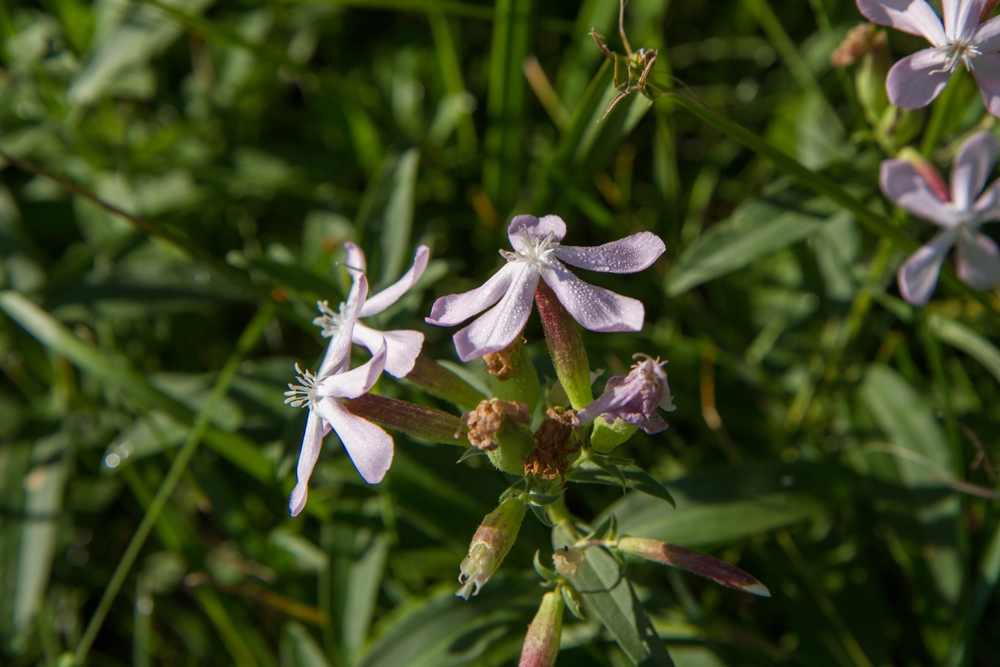
Woodland Phlox is a low-growing perennial that thrives in shaded, moist soil. It produces clusters of blue, purple, or pink flowers in spring. The blooms attract butterflies and add color to shaded areas. Its spreading habit makes it useful as ground cover. Pine needle mulch helps keep the soil cool and damp.
This plant provides fragrance as well as beauty. It looks best when planted in groups under trees. Woodland Phlox pairs well with trillium and ferns for a natural look. It can also reseed and spread over time. Its seasonal blooms brighten shady areas with ease.
Ajuga (Bugleweed)
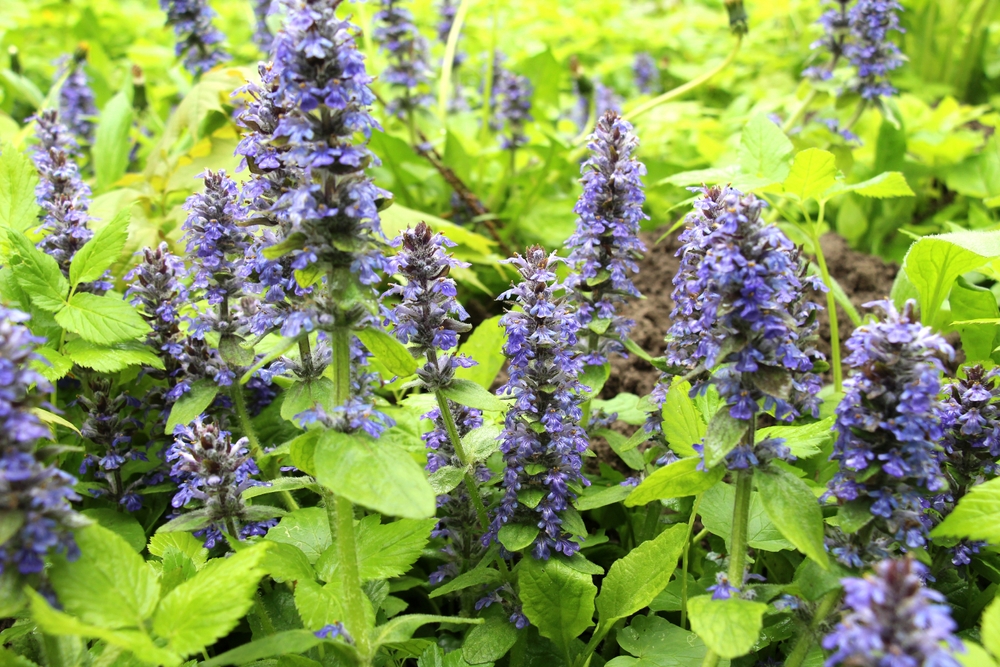
Ajuga is a ground cover that handles shaded spots under pine trees. Its low rosettes of leaves spread quickly to form a dense mat. In spring, it produces spikes of blue or purple flowers. Ajuga tolerates acidic soil and grows well with pine needle mulch. Its dark leaves offer contrast to surrounding greenery.
This plant is effective at keeping weeds from spreading under trees. It is hardy and requires little attention once established. Ajuga works well in large patches for ground cover. Some varieties have bronze or variegated leaves for added interest. It is both practical and decorative beneath pines.
Japanese Anemone
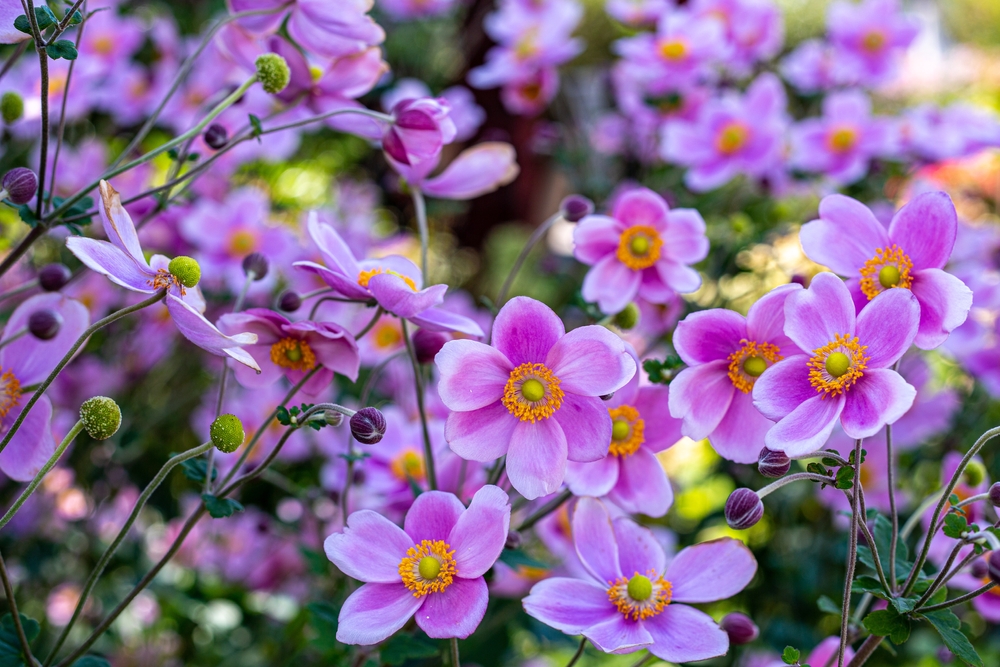
Japanese Anemones are perennials that bloom in late summer and fall. They thrive in shaded gardens and tolerate the acidic soil found under pines. Their delicate flowers come in pink, white, or purple shades. These plants grow on tall stems that sway gently in the breeze. Their foliage remains attractive throughout the season.
They work well when planted in groups, adding movement and color. Japanese Anemones spread slowly and return each year. They are resistant to many pests, making them reliable garden plants. Their late-season blooms help extend color into fall. These flowers bring elegance and charm under pine trees.
Pulmonaria (Lungwort)
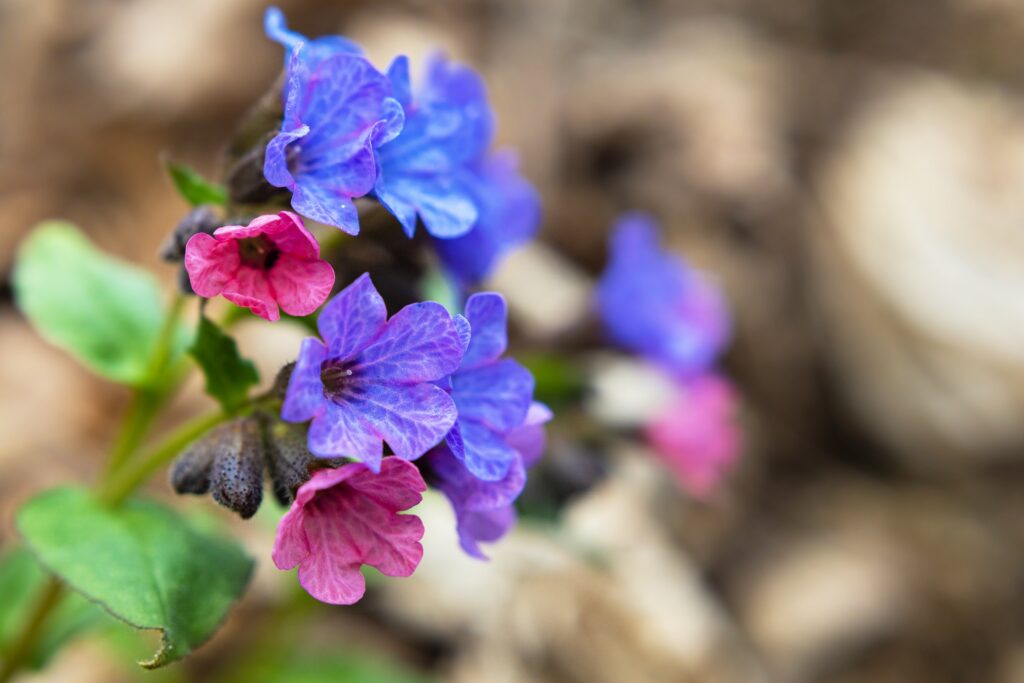
Pulmonaria is a shade-loving perennial with spotted leaves. It thrives in moist, well-drained soil under pine trees. Its early spring flowers appear in pink, blue, or purple. The leaves remain attractive long after flowering. Pulmonaria grows in low clumps, making it a good ground cover.
This plant is valued for both its foliage and blooms. It mixes well with hostas and ferns in shaded gardens. Pulmonaria is deer-resistant, which helps protect it in woodland areas. Its unique spotted leaves add interest to dark spots under trees. This makes it a versatile and beautiful addition beneath pines.
This article originally appeared on Avocadu.
